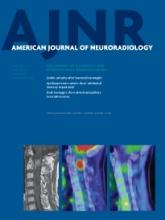Abstract
SUMMARY: Fetal and neonatal MR imaging is increasingly used as a complementary diagnostic tool to sonography. MR imaging is an ideal technique for imaging fetuses and neonates because of the absence of ionizing radiation, the superior contrast of soft tissues compared with sonography, the availability of different contrast options, and the increased FOV. Motion in the normally mobile fetus and the unsettled, sleeping, or sedated neonate during a long acquisition will decrease image quality in the form of motion artifacts, hamper image interpretation, and often necessitate a repeat MR imaging to establish a diagnosis. This article reviews current techniques of motion compensation in fetal and neonatal MR imaging, including the following: 1) motion-prevention strategies (such as adequate patient preparation, patient coaching, and sedation, when required), 2) motion-artifacts minimization methods (such as fast imaging protocols, data undersampling, and motion-resistant sequences), and 3) motion-detection/correction schemes (such as navigators and self-navigated sequences, external motion-tracking devices, and postprocessing approaches) and their application in fetal and neonatal brain MR imaging. Additionally some background on the repertoire of motion of the fetal and neonatal patient and the resulting artifacts will be presented, as well as insights into future developments and emerging techniques of motion compensation.
ABBREVIATIONS:
- bFFE
- balanced fast-field echo
- FLASH
- fast low-angle shot
- GRO
- readout gradient
- NSA
- number of signal averages
- PROPELLER
- periodically rotated overlapping parallel lines with enhanced reconstruction
- RF
- radio-frequency
- © 2013 by American Journal of Neuroradiology
Indicates open access to non-subscribers at www.ajnr.org












